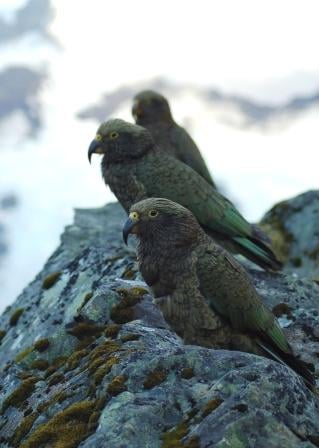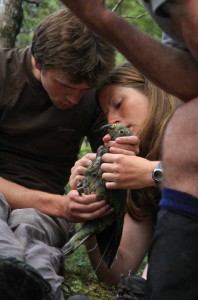Funded by the NZ Lottery Grants Board and DOC
The Kea Conservation Trust has been running kea population surveys each year since 2009. These surveys are run in partnership with the Department of Conservation (DOC).
Each site has a minimum of 3 years of data collected. Survey sites are located at Nelson Lakes (2009 - 2011), Kiwi Saddle - Kahurangi National Park (2011 - 2014), the Hawdon Valley - Arthur's Pass (2009 - 2012 and 2017), the Borland Range - Fiordland (2009 - 2010,2012), Kowhai Saddle - Kaikoura Mountains (2014) and the Matukituki Valleys - Mt Aspiring NP (2016 - 2017).
Department of Conservation leads the surveys in Kahurangi NP and the West Coast (Okarito). Further sites are proposed for 2018 in Fiordland NP (Murchison Mtns and the Wapiti ballot blocks (Lower and Upper Glaisnok)).
Each survey area has different levels and methods of pest control in place. The aim of the surveys is to ascertain each site's resident breeding pairs, successful breeding events and changes to these populations over years (declining, stable or increasing). Over the years data confirms that kea struggle to successfully fledge chicks in areas where there is minimal or no pest control.
Each survey is carried out over a 10 period in January for 3 hours every morning (6-9 am) and evening (6-9 pm). Survey teams consist of a Site Coordinator directing 5-7 teams, each made up of an experienced kea handler teamed up with 1-2 fit volunteers. Each team positions themselves at treeline (approx 1500-1800 metres) on individual spurs and records sightings and calls twice a day for each 3 hour period. Kea are caught up where possible, biodata collected, blood taken (to test for avian diseases and/or lead levels) and identification bands and transmitters attached (depending on sex and life stage). Females are attached with egg-timer transmitters to aid in the detection of nesting behaviour during the year and males and juveniles are fitted with long-life VHF transmitters or satellite transmitters.
Transmittered kea are followed up during the year to ascertain survivorship and nesting status (refer nest monitoring project).
The population's survey at Nelson Lakes, an area extensively studied by DOC in the 1990s, showed a severe decline in the resident kea population from 11 pairs producing an average of 10 chicks per annum in an area of 7,000 hectares to 3 pairs producing 2 chicks per annum in an area of almost 14,000 hectares. This major decline is serious cause for alarm.

